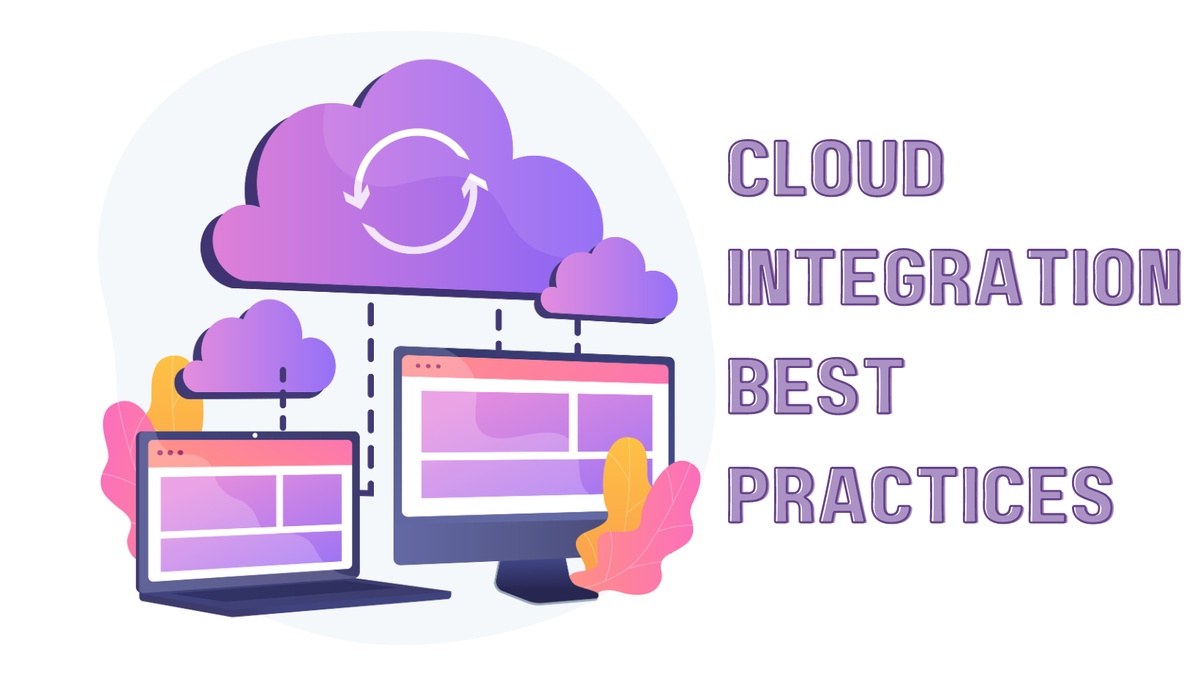Technology is constantly changing, and businesses are adapting to these changes by incorporating cloud integration. By adapting, they can enhance their operations, streamline procedures, and boost efficiency. Cloud integration involves connecting various cloud-based systems and services. It allows them to function as one single unit. As more businesses move towards the cloud, adopting best practices to achieve optimal results becomes increasingly important, and this article will delve into these important cloud integration best practices.
Cloud Integration Best Practices
Employ these cloud integration best practices to utilize the advantages of cloud integration:
Understand Your Business Needs
To ensure an effective approach to cloud integration, it is essential to step back and analyze your business requirements carefully. You need to identify the business processes that require improvement and determine which systems should be connected for maximum efficiency. You can tailor your cloud integration strategy to meet specific objectives by clearly understanding your needs.
Establish Your Integration Goals
Establishing your integration goals is the crucial step in cloud integration best practices. Before starting, it is important to identify and establish your objectives and special requirements. After you've identified your objectives, you can look into which services and tools will best assist you in reaching them. Remembering that there is no universal approach to cloud integration is critical. So, the ideal strategy will be determined by your individual goals and demands.
Choose The Right Integration Tools
Integrating your cloud apps is critical; selecting the proper tools can greatly influence the outcome. There are so many cloud integration tools out there. Choosing the one that best fits your individual requirements is critical. It's also a good idea to utilize pre-built integrations. Although companies build integrations for their individual use, rebuilding them for every client is not affordable. Integrations should be built once and reused for every client that needs them.
Prioritize Security
Security is one of the most important considerations when integrating with the cloud. Implementing encryption, performing regular security audits, and access controls to protect sensitive data is important. Strong security will safeguard your business and help you create faith with clients.
Embrace Automation
Cloud integration can be made more efficient by utilizing automation. Automating repetitive tasks and workflows can decrease the chance of errors and save time for your staff. Automation increases productivity and ensures consistency in data processing and other operations. It will result in more dependable outcomes. Automation is a key driver of efficiency in cloud integration.
Training
It is necessary to highlight the importance of training for every employee using the latest system. You should give suitable time and resources for training based on how many applications they will utilize and the complexity of their job. Anyone who invests time in implementing an integrated cloud system but fails to give proper staff training could risk the system's success.
Manage API integration
API management is critical for enabling smooth cloud integration. An API management platform enables a centralized method for developing, deploying, and managing APIs. This makes integrating multiple apps and systems easier while maintaining consistency and trustworthiness in the APIs.
Continuous Monitoring and Maintenance
Cloud integration is a continuous process that demands ongoing monitoring and maintenance. It is essential to evaluate the performance of your integrated systems regularly. You have to identify any bottlenecks or issues that exist and resolve them promptly. Proactive monitoring is essential to keep your cloud integration efficient and connected with changing business demands.
Set an Accurate Data Recovery Plan
Implementing a reliable data backup structure is the last step in cloud integration best practices. It is critical to properly investigate the data backup choices and select the one that best meets your requirements. Regarding data backup, hybrid systems create an additional issue because the personal systems must be protected. Many customers choose cloud integration solutions to protect the safety of their data.
Conclusion
Businesses must follow Cloud Integration Best Practices to fully leverage cloud technology's potential. The key to successful cloud integration lies in a comprehensive and organized approach. By sticking to the above cloud integration best practices, you can unleash the actual potential of cloud integration and move your organization forward.


No comments yet